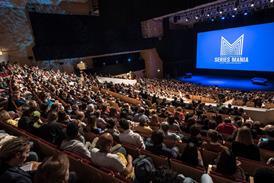It has also announced updates for its talent tracking system and a hardware camera tracker

Zero Density has announced ZD | OAG, an on-air graphics solution for use in news, entertainment, and sport.
Using Ada generation NVIDIA GPU and Zero Density graphics software, the technology allows users to create UltraHD visuals. It is built on top of Unreal Engine and enable users to take advantage of animation control, text effects and more.
The software bundle includes Zero Density’s universal control UI, RealityHub, with which broadcasters can control items such as real-time graphics and robotic cameras. ZD | OAG is available through a subscription programme, which includes technical assistance and access to updates.
Zero Density CEO Ofir Benovici said: “We thought photoreal graphics should not be limited to virtual studios and extended it to on-air graphics with ZD | OAG. With support for real-time external data feeds, automation systems and integration to NRCS systems through MOS protocol, ZD | OAG takes the guesswork out of setting up an on-air graphics workflow. Anyone can start using ZD | OAG as a standalone product or with other Zero Density solutions depending on what their project requires.”
In addition to its move into on-air graphics, Zero Density has updated its talent tracking software, Traxis. The AI system is now able to track multiple people in a 3D environment without the need for wearables, allowing broadcasters to more easily generate accurate reflections, refractions, and virtual shadows in real-time for multiple people at once.
The company has also launched a piece of hardware, the Traxis Camera Tracker, which attaches to the cameras and provides lens calibration, which means there’s no need to install hundreds of calibration points for a photoreal result — even when tracking challenging closeups, fast camera movements, and crane rigs.
Finally, Zero Density revealed ZD | Virtual Studio, a software bundle for virtual studios that includes real-time keying and graphics control applications. It has support for real-time depth of field, ray tracing and Unreal Engine 5.1.

































No comments yet